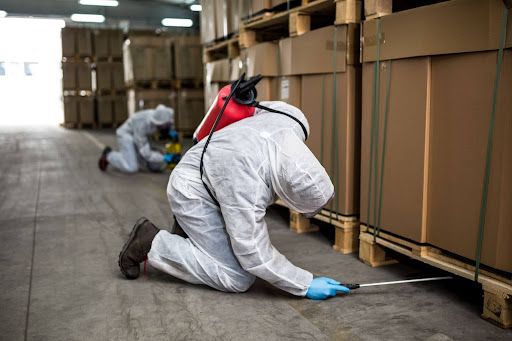The Evolution of Pest Control: From Chemicals to Natural Solutions
The story of modern pest control is, in many ways, a story about progress—advances in science, shifts in homeowner priorities, and a broader understanding of how to protect what matters most: people, pets, and property. Over the last few decades, the industry has moved from heavy reliance on broad-spectrum chemicals to strategies that are more targeted, preventive, and natural. At Natura Pest Control, this evolution aligns with how we serve our customers every day across Nevada and Idaho, pairing proven results with a gentler, more thoughtful approach to treatment.
From Broad-Spectrum Sprays to Targeted Strategies
Early modern pest control emphasized broad applications designed to eliminate as many pests as possible in as many places as possible. While effective in knocking down visible activity, this approach treated symptoms more than sources and often required frequent reapplication to keep pests from returning.
What’s changed is the emphasis on precision. Today’s standard of care in responsible pest management is Integrated Pest Management (IPM)—a science-based framework that prioritizes inspection, monitoring, habitat modification, and targeted interventions that focus on the specific pest, the places it lives, and the seasonality that drives it. IPM is not a single product or a one-time “fix,” but a process that delivers durable control with fewer, more strategic inputs.
Why Homeowners and Pros Chose a Different Path
Several forces have pushed the industry toward natural and low-impact solutions:
- Scientific advances have made baits, growth regulators, and botanical formulations more effective and longer-lasting when placed correctly.
- Consumers increasingly prefer treatments that align with family- and pet-friendly living, along with landscape and pollinator-conscious practices.
- Service providers have better tools for monitoring activity, sealing entry points, and reducing conducive conditions so pests are less likely to return.
Public health and environmental awareness have been part of the story too. For example, illnesses from mosquito, tick, and flea bites in the U.S. more than tripled from 2004 to 2016, underscoring the need for effective, proactive management that also aligns with community expectations for responsible care. At the same time, protecting pollinators has become a mainstream priority; pollination adds an estimated $15 billion in value to U.S. crops each year, a reminder that beneficial species are worth safeguarding as we manage pests around homes and gardens.
The net result is a clear direction: control the pests causing problems while minimizing off-target effects and emphasizing prevention first.
What “Natural” Means Today
“Natural” in pest control is both a philosophy and a toolkit. It emphasizes methods and materials that prioritize human comfort, property protection, and ecological balance. In practice, that often looks like:
- Careful inspection to identify where pests enter, nest, and feed.
- Exclusion and habitat adjustments—sealing gaps, fixing moisture issues, and reducing harborage—to make your property less inviting to pests.
- Targeted applications using low-impact products, including botanically derived formulations and baits placed in specific zones where pests live and travel.
- Ongoing monitoring so service can be adjusted as seasons change and pest pressures rise or fall.
This approach is not only effective—it’s also repeatable, predictable, and designed to reduce the cycle of chase-and-spray. Biopesticides and other reduced-risk options play a meaningful role in IPM when used correctly and in context.
The Western Context: Nevada and Idaho
Nevada and Idaho have distinct climates and geographies, but they share a few realities that shape pest management:
Seasonality is pronounced. In southern Nevada, warm-weather pests like ants, spiders, and scorpions can surge as temperatures rise and landscapes are irrigated. In Idaho, dramatic seasonal shifts bring spring and summer invaders such as ants and wasps, followed by fall intruders like elm seed bugs and boxelder bugs looking for cozy overwintering spots.
Growth corridors matter. Rapid development creates new edges between open land and neighborhoods, which can increase encounters with rodents and occasional invaders seeking food and shelter.
Water and vegetation patterns influence activity. Irrigated yards and xeriscapes each create different pest pressures—from moisture-loving pests and conducive mulch layers to shaded harborage around rock borders and foundation plantings.
For homeowners, the takeaways are simple: a plan that adapts to seasons, targets species common to your neighborhood, and focuses on sealing, sanitation, and specific treatment zones will deliver more consistent results with fewer surprises. That is precisely the kind of program we implement at Natura Pest Control, calibrating service for the way pests behave in Nevada and Idaho communities.
Benefits You Can Feel—At Home and in the Neighborhood
A natural, IPM-forward program delivers benefits that go beyond “fewer pests.” Homes feel fresher when treatments are targeted and tidy. Landscaping thrives when we treat the right places for the right reasons. Neighbors appreciate a considerate approach that prioritizes prevention, communication, and precise service over one-size-fits-all spraying.
This is why so many homeowners in Nevada and Idaho choose solutions that are not only effective, but also aligned with how they want to live: mindful of pets and kids, supportive of beneficial insects, and focused on long-term relief rather than short-term knockdowns.
What to Expect When You Partner with Natura
When you choose Natura Pest Control, you get a partner who listens and tailors service. We map current concerns, set expectations for seasonality in your area, and build a maintenance cadence that prevents surprises. Visits are punctual and purposeful; treatments are documented and explained; and plans are updated as your property or priorities change.
That kind of consistency is how you stay ahead of ants in spring, spiders in summer, and invaders in the fall—and why your home can remain peaceful through every season. If you’re looking for natural pest control in Nevada or Idaho that delivers results without the drama, start with a conversation with the team at Natura Pest Control. We’ll help you choose a plan that fits your home, your family, and the way you want to live.




